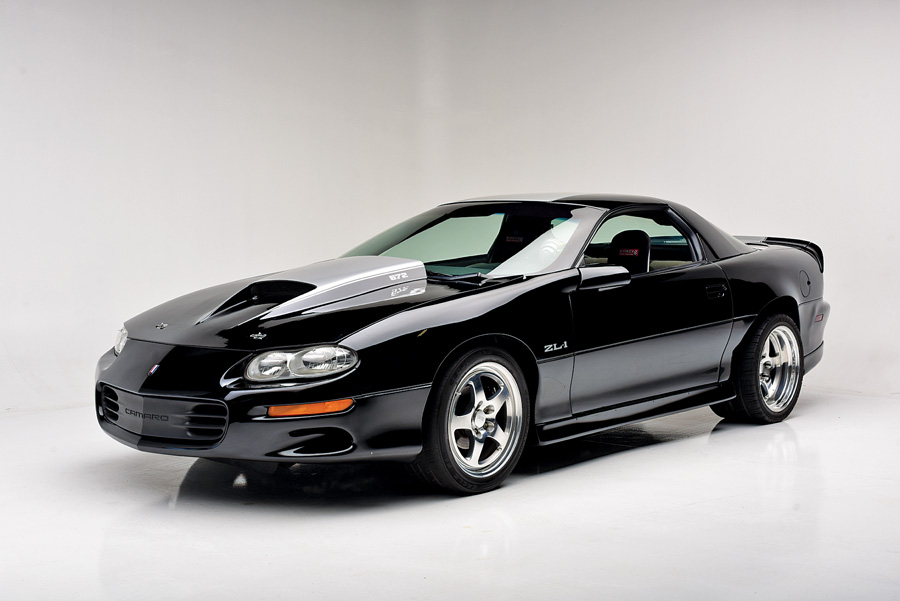
Back in April, the all-new Dodge Challenger Demon hit the scene. By now, I’m sure you’ve heard all the metrics: 840 horsepower, 9.60s in the quarter, supercharger feeding on cold air from the a/c system, and a transbrake to help yank the wheels off the tarmac. Dodge plans to lash together 3,300 of these monsters for the U.S. and Canada this year. Dodge now owns the top-dog spot in the current muscle-car wars — as they’re building the next-level — and maybe ultimate — instant collectible for a booming modern muscle market.
Dodge did a good job of leaking bits and pieces of information about the Demon in the months leading up to its New York debut. The Internet buzzed about items such as optional seats and factory drag radials — both firsts in the muscle world. Even ACC’s editorial staff was caught up in that long-building swell, so it didn’t surprise me that most of the team assembled in my office to watch the unveiling online.
Dodge didn’t waste much time getting down to business: After the car rolled out, the driver set his transbrake and the Hemi chugged as it built boost. At the drop of the pedal, the Demon sprang forward, shrieking through a cordoned-off section of warehouse. In my office, ACC Executive Editor Chester Allen dropped a few choice four-letter words as the Demon shot across my screen, and then asked just how in the hell we got here.
Culture power shift
How did we get here? What got us on the path that led to a renewed Detroit muscle-car war that brought us a 9-second factory drag car with a warranty?
There are a lot of possible answers to that question, including the new retro craze that the 2005 Mustang started. Maybe it was the 1997 LS1 engine or the 2004 5.7 Hemi. Maybe it was the 2003 Mustang Cobra Terminator or the 2007 GT500. But I think you have to go further back to explain the fire that brought us the Demon. Specifically, to two cars from the hearts and minds of two old-school car guys: GM’s Jon Moss and Ford’s John Coletti — and to the culture they kick-started in the process.
In 1995, GM Special Vehicle boss Jon Moss and his team built a 1993 Camaro using a race-spec ZL1 427 big block. The car started life as Moss’ company commuter, but that new engine turned the Camaro into a buzz machine for the 1995 SEMA show, where it was used to show off GM’s performance heritage and future.
Ford’s Special Vehicle Engineering boss John Coletti saw Moss’ monster Camaro at SEMA. In my mind, this moment sparked this now-red-hot muscle-car war — when a GM staffer leaned over to Coletti and reportedly said, “I bet you haven’t got anything in Dearborn that can tangle with this.”
With that, GM took a shot at Coletti, the head of Ford performance, and Coletti fired right back. His weapon of choice was the Boss Mustang, built on a 1994 mule and fitted with a mountain of a Boss 429 motor. Job One: Shame Moss and his ZL1 Camaro.
After a couple of years of taunts, secret mechanical upgrades and a back-and-forth over the rules, a final showdown played out in the pages of Car and Driver in January 2000.
That’s where I read about two modern Big Three performance bosses turned street racers who used the considerable resources at their disposal to trounce each other on the dragstrip. Maybe the Ford-versus-Chevy thing had never really died, but this event took the fight to a level that we hadn’t seen since the 1970s.
It was easy to rally behind one or the other, and thousands of car guys on either side of the fight did just that. Both the Boss and the Z were ridiculously quick cars, with the Boss taking the final win with a 10.55 run to the Camaro’s 11.01.
I think that race, brought to us by Detroit, played a big part in stoking a new horsepower war in the market. And with the addition of new technology to fuel ever-growing performance figures, that age-old desire to come out on top is now burning hotter than ever across all the brands.
A best buy
Just a few days before the Demon was introduced to a throng of reporters and viewers around the world, Moss’ ZL1, with somewhat less fanfare, crossed the auction block at Barrett-Jackson’s Palm Beach event. Formerly from the GM Collection, it sold without reserve and on a scrap title for $27,500, including buyer’s premium.
Word on the street is that prices on the Demon will fall right around $85,000, which is a heck of a deal considering the engineering that went into it. But will something come along from Chevrolet or Ford to unseat the new king in a few years’ time? How will Hellcat values change now?
We’ll have to wait to see who comes out on top. But one thing I can say for sure is the buyer of that old ZL1 got one of the best deals of the year on a modern muscle icon that helped get us back to the days of horsepower.